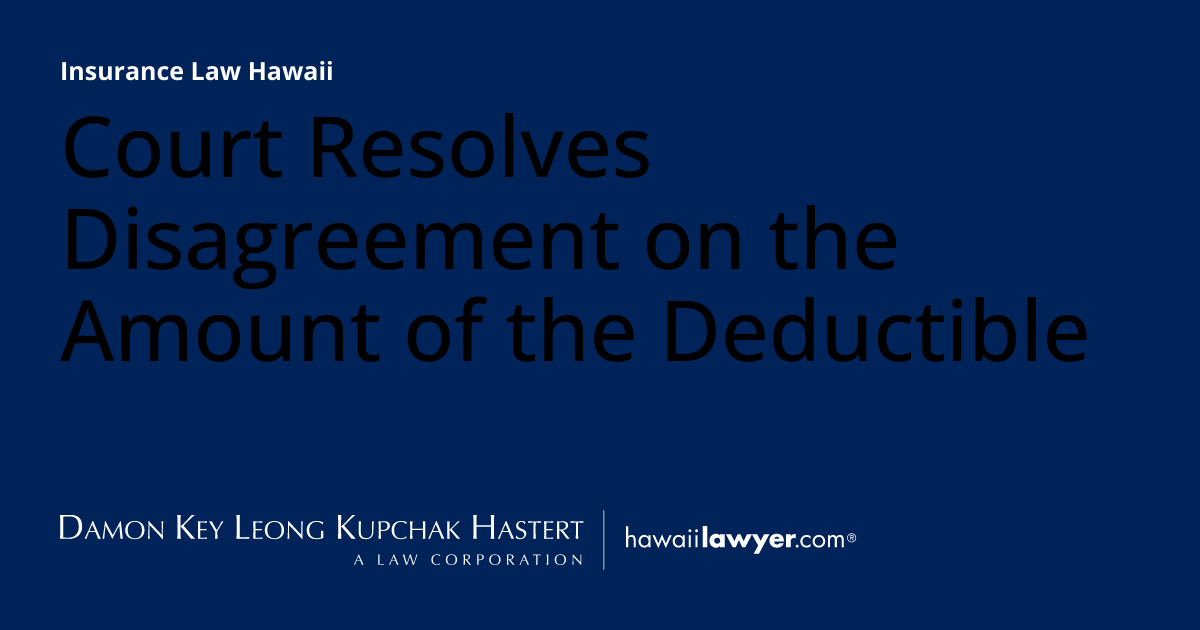After a windstorm induced injury to the insured’s constructing and restore supplies, the courtroom sided with the insured in figuring out the quantity of the deductible. Semaho, Inc. v. AMCO Ins. Co., 2025 U.S. Dist. LEXIS 193521 (D. Colo. Sept. 30, 2025).
Semaho owned two industrial buildings insured underneath a coverage issued by AMCO. The buildings had been broken in a windstorm and Semaho’s contractor saved the constructing supplies for the repairs on one constructing’s roof.
A second windstorm then severely broken the constructing supplies saved on the roof. Semaho submitted a declare for the misplaced constructing supplies. Protection was undisputed however the events disagreed over which deductible ought to apply to Semaho’s declare. The important thing coverage provision said that the deductible ought to be calculated individually for the “constructing” and for sure classes of “private property,” primarily based on “the worth(s) of the property that has sustained loss or injury.”
Semaho contended that the constructing supplies had been “private property’ throughout the plain which means of the time period, so the deductible ought to be calculated primarily based on the worth of the misplaced constructing supplies. AMCO countered that the constructing supplies had been solely lined pursuant to the protection on the constructing, so the constructing was the property that sustained the loss, and the deductible ought to be calculated utilizing the worth of the constructing. The 2 buildings every had a price of of $22 million for Buiding Protection underneath the coverage. As a result of AMCO contended that the relevant deductible was $440,000, and that the worth of the misplaced constructing supplies didn’t exceed the deductible, AMCO didn’t difficulty any funds on Semaho’s declare for the misplaced supplies.
Semaho sued for breach of contract and dangerous religion. Each events moved for abstract judgment, asking the courtroom to undertake their interpretation of the coverage provisions related to calculating the deductible. AMCO additionally moved for abstract judgment on the dangerous religion declare.
The events agreed that the deductible proportion was 2%, however disagreed over whether or not the two% utilized to the worth of the constructing or to the misplaced supplies. The Windstorm or Hail Deductible supplied that “[a] Deductible is calculated individually for, and applies individually to: . . . every constructing if two or extra buildings maintain loss or injury; . . . [or] Private property within the open.” AMCO argued that the misplaced supplies had been a part of the “constructing,” so the deductible ought to be 2% of the worth of the Constructing Protection. Semaho argued that the misplaced supplies had been “[p]ersonal property within the open,” so the deductible ought to be 2% of the worth of the supplies.
The courtroom discovered AMCO’s interpretation interesting. When the Endorsement defined that the deductible ought to be calculated utilizing the “worth(s) of the property that has sustained loss or injury,” the related “property” was your complete “constructing” as outlined within the Protection Property Provision. The misplaced constructing supplies had been solely Lined Property as a result of the Lined Property Provision handled them as a part of the protection on the “constructing,” so they might not be handled as separate “private property” entitled to their very own deductible underneath the Endorsement.
But it surely was not clear to the courtroom that the Lined Property Provision ought to be understood to outline “constructing” for the Endorsement and the remainder of the coverage. Accepting the Lined Property Provision as a policy-wide defintion of the phrase “constructing’ would imply deciphering “constructing” to incorporate varied types of private property, reminiscent of constructing supplies. This interpretation defied the plain meaing of the phrase “constructing.” The Endorsement itself didn’t point out that its use of the phrases “constructing” and “private property” ought to be interpreted in response to something aside from their plain which means.
The Endorsement could possibly be moderately learn both manner: the “property that has sustained the loss” could possibly be the “constructing” or “private property” inside these phrases’ odd which means, or it could possibly be “constructing” as described within the Lined Property Provision, such that the constructing was all the time the property that sustained the loss when an insured submitted a declare underneath the Constructing protection.
Due to this fact, the coverage was prone to multiple affordable interpretation and ambiguous. The ambiguities within the coverage had been construed towards AMCO and in favor of protection. The Endorsement’s Windstorm or Hail Deductible was to be calculated as 2% of the worth of the misplaced constructing supplies. Semaho’s cross-motion was granted.
As a result of AMCO’s interpretation of the related coverage provisions was affordable, AMCO’s movement was granted partially dismissing the dangerous religion declare.

